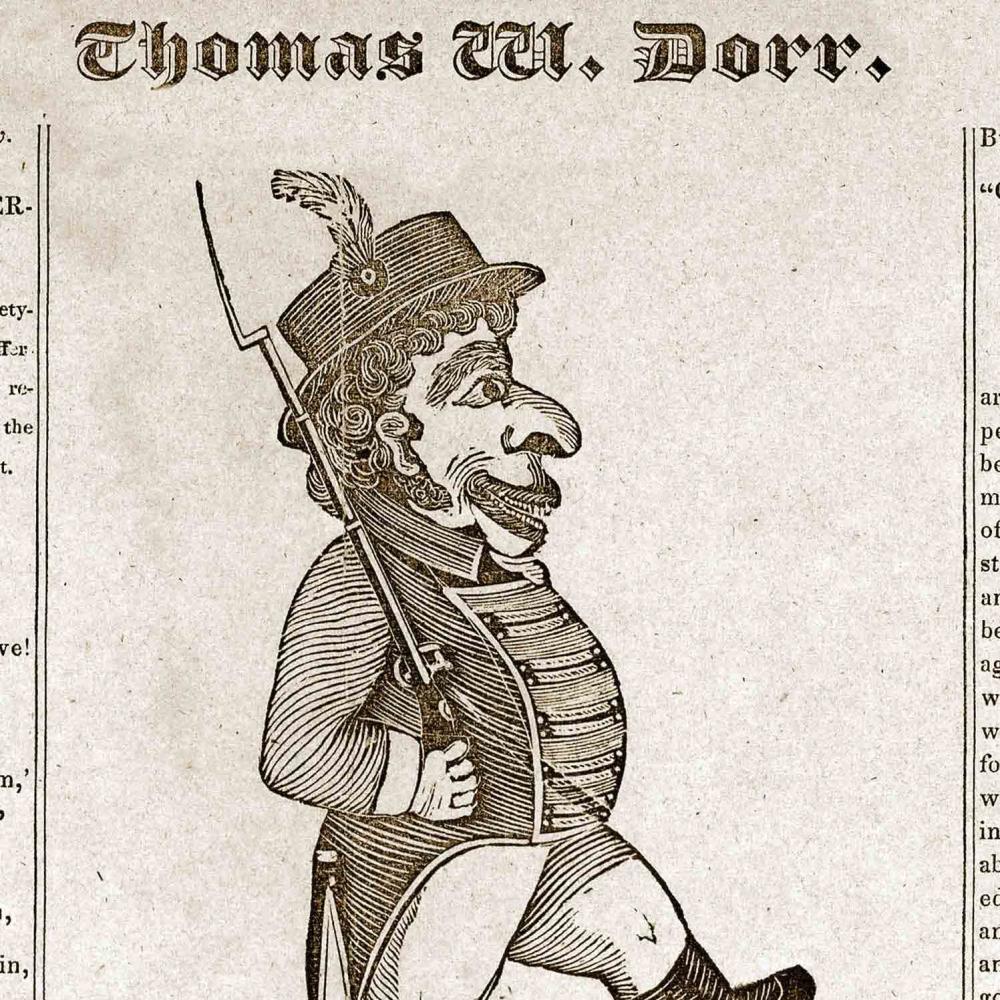In May 1842, a throng of newly elected legislators marched up the hill to the statehouse in Providence. Led by the new governor, Thomas Wilson Dorr, they were here to usher in a new era of equality. They’d been elected under the freshly ratified People’s Constitution, which erased the state’s property requirements for voting and empowered the impoverished voices of Rhode Island’s growing manufacturing cities.
But as the triumphant legislators prepared to enter the halls of power, something went amiss. The door to the statehouse would not budge. Someone had locked it, and no one had the key. They were forced to convene at a nearby unfinished building instead.
This is just one of the stories recorded in Rhode Tour, a free website and app developed by Rhode Island Humanities, the Rhode Island Historical Society, and the John Nicholas Brown Center for Public Humanities and Cultural Heritage. The goal of the program is to reveal the history that’s hiding all around us. Wherever you are in Rhode Island, you can open the app on your phone, and it will guide you to a nearby point of interest. Stories are organized into more than thirty thematic tours, such as the Revolutionary War, Latino History, or the history of female designers, so you can follow a historical thread all around the state if you so wish.
The story above comes from a tour about the Dorr Rebellion, one of the oddest political incidents from early America and one that’s been largely forgotten. You see, the door to the statehouse had not been locked on accident. While Dorr’s new constitution had been ratified in a statewide popular vote, the government it sought to replace had not given its blessing.
Rhode Island’s ruling class was happy with their existing founding document, the royal charter granted by King Charles II in 1663. Despite a growing chorus of Rhode Islanders who argued that it was somewhat un-American to claim power from a royal decree, the establishment would not budge. The charter’s provision that, in order to vote, a man must own 40 British pounds of property effectively disenfranchised the newly arrived Irish immigrants who’d come to work in the mills. If they suddenly had a voice, surely many of the existing legislators would lose their grip on power.
So, earlier that April, as Dorr’s supporters went to the polls to elect a government under the new constitution, those who favored the old system held their own separate election. Unlike Dorr’s upstart legislature, the Charterite government actually had the key to the statehouse. They took their accustomed seats and began issuing arrest warrants for Dorr’s supporters.
Dorr, perhaps rashly, decided his best response was to start a civil war. He procured two light cannons, gathered hundreds of supporters, and marched on the Providence armory. Once again, he found the door locked and the guards inside unwilling to let them in. He ordered his cannon crews to blast their way inside, but either due to wet powder or faulty equipment, the guns would not fire. Once again, Dorr’s revolutionary march ended in a whimper and the crowd dispersed.
The wind quickly left the sails of Dorr’s rebellion. He spent more than a month hiding out of state but returned in June and summoned his supporters to the town of Chepachet. Unfortunately, only a few hundred answered the call and a far larger Charterite militia was spotted marching on their position. Dorr and his followers wisely decided to call the whole thing off, and the war ended without a shot.
While the Old State House in Providence is a preserved historic site, few of the other locations on Dorr’s Rhode Tour were as lucky. Some have disappeared entirely, like the tailor shop of William Rodman who commanded a Charterite unit at Chepachet and later spun the event into a heroic tale about “the triumph of law over misrule, and mobocracy.” What’s left of his shop is buried beneath the business towers and ground floor coffee shops of Providence’s financial district. Other sites have been repurposed, like St. Stephen’s Church. There, Rev. Alexander Crummell passionately argued for Black suffrage to be included in the People’s Constitution, invoking the founders’ declaration that all men are created equal and arguing that “no tinge of the skin can possibly invalidate that cardinal doctrine of our country’s liberty.” Today, the building houses a small theater—its legacy in the suffrage battle invisible to the naked eye.
Rhode Tour seeks to pull back this veil of modernity and offer a glimpse of the Rhode Island that used to be. Through articles, pictures, and video, they bring these stories to life and remind visitors that it’s not the buildings that were important, but the actions of those who lived there and the ideals for which they fought.
As for Dorr’s ideals, they would eventually win out. Though victorious on the battlefield, the Charterites relented to the popular will and passed a constitution in November 1842. The document incorporated many, though not all, of the tenants of the People’s Constitution. Dorr himself was sentenced to life in prison but was released after just a year.
If you follow this Rhode Tour, you’ll eventually be led to Rhode Island’s modern statehouse. There you’ll come face to face with a statue of Dorr. Just outside the Senate chamber, he stands tall and determined, looking like some recalcitrant political saint—patron to all those who have struggled to replace the dead letter of outdated tradition with a more just world, only to find the door locked.




